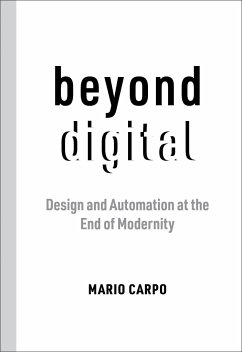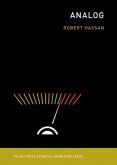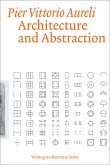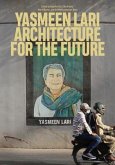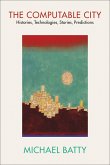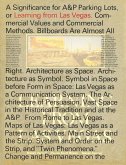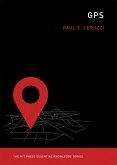19,99 €
inkl. MwSt.
Sofort lieferbar

10 °P sammeln
- Broschiertes Buch
- Merkliste
- Auf die Merkliste
- Bewerten Bewerten
- Teilen
- Produkt teilen
- Produkterinnerung
- Produkterinnerung
"An analysis of recent developments in computer-based design and production in architecture"--
Andere Kunden interessierten sich auch für
![Analog Analog]() Robert HassanAnalog11,99 €
Robert HassanAnalog11,99 €![Architecture and Abstraction Architecture and Abstraction]() Pier Vittorio AureliArchitecture and Abstraction23,99 €
Pier Vittorio AureliArchitecture and Abstraction23,99 €![Yasmeen Lari Yasmeen Lari]() Angelika FitzYasmeen Lari24,99 €
Angelika FitzYasmeen Lari24,99 €![Radical Pedagogies Radical Pedagogies]() Beatriz ColominaRadical Pedagogies41,12 €
Beatriz ColominaRadical Pedagogies41,12 €![The Computable City The Computable City]() Michael BattyThe Computable City40,99 €
Michael BattyThe Computable City40,99 €![Learning from Las Vegas, facsimile edition Learning from Las Vegas, facsimile edition]() Robert Venturi (Scott Brown Venturi & Associates Inc)Learning from Las Vegas, facsimile edition60,99 €
Robert Venturi (Scott Brown Venturi & Associates Inc)Learning from Las Vegas, facsimile edition60,99 €![GPS GPS]() Paul E. Ceruzzi (Curator of Aerospace Electronics and Na ComputingGPS24,99 €
Paul E. Ceruzzi (Curator of Aerospace Electronics and Na ComputingGPS24,99 €-
-
-
"An analysis of recent developments in computer-based design and production in architecture"--
Hinweis: Dieser Artikel kann nur an eine deutsche Lieferadresse ausgeliefert werden.
Hinweis: Dieser Artikel kann nur an eine deutsche Lieferadresse ausgeliefert werden.
Produktdetails
- Produktdetails
- Verlag: MIT Press Ltd
- Seitenzahl: 199
- Erscheinungstermin: 18. April 2023
- Englisch
- Abmessung: 203mm x 142mm x 20mm
- Gewicht: 338g
- ISBN-13: 9780262545150
- ISBN-10: 0262545152
- Artikelnr.: 65341071
- Herstellerkennzeichnung
- Libri GmbH
- Europaallee 1
- 36244 Bad Hersfeld
- gpsr@libri.de
- Verlag: MIT Press Ltd
- Seitenzahl: 199
- Erscheinungstermin: 18. April 2023
- Englisch
- Abmessung: 203mm x 142mm x 20mm
- Gewicht: 338g
- ISBN-13: 9780262545150
- ISBN-10: 0262545152
- Artikelnr.: 65341071
- Herstellerkennzeichnung
- Libri GmbH
- Europaallee 1
- 36244 Bad Hersfeld
- gpsr@libri.de
Mario Carpo is the Reyner Banham Professor of Architectural History at the Bartlett-UCL in London and Professor of Architectural Theory at the University of Applied Arts (die Angewandte) in Vienna. He is the author of Architecture in the Age of Printing (2001), The Second Digital Turn (2017), and other books.
1 Ways of Making 1
1.1 Hand-Making 4
1.2 Mechanical Machine-Making 6
1.3 Digital Making 12
1.4 Beyond the Anthropocene: A New Economy without Scale 16
1.5 The Collapse of the Modern Way of Making 20
1.6 The Teachings of the Pandemic 24
2 The Future of Automation: Designers Redesign Robotics 35
2.1 Florence, 1450: The Invention of Notational Work 39
2.2 America, 1909-1913: Notational Work Goes Mainstream 42
2.3 Taylor's Reinforced Concrete as a Social Project 47
2.4 The Automation of Notational Work 52
2.5 First Steps toward Post-Notational Automation 63
3 A Tale of Two Sciences, or The Rise of the Anti-Modern Science of
Computation 79
3.1 The Two Sciences 82
3.2 Modern Architecture and Postmodern Complexity 93
3.3 Architects, Computers, and Computer Science 94
3.4 Degenerate Complexism and the Second Coming of AI 112
3.5 The Limits of AI 2.0 118
3.6 Machine Learning and the Automation of Imitation 120
3.7 Sorry: There Won't Be a Third Digital Turn Driven by AI 126
4 The Post-Human Chunkiness of Computational Automation 129
4.1 Mechanical Assembly as the Style of Dissent 132
4.2 Modernist Modularity, Postmodernist Collage, and Deconstructivist
Aggregation 140
Epilogue: Being Post-Digital 155
Acknowledgments 163
Notes 165
Index 191
1.1 Hand-Making 4
1.2 Mechanical Machine-Making 6
1.3 Digital Making 12
1.4 Beyond the Anthropocene: A New Economy without Scale 16
1.5 The Collapse of the Modern Way of Making 20
1.6 The Teachings of the Pandemic 24
2 The Future of Automation: Designers Redesign Robotics 35
2.1 Florence, 1450: The Invention of Notational Work 39
2.2 America, 1909-1913: Notational Work Goes Mainstream 42
2.3 Taylor's Reinforced Concrete as a Social Project 47
2.4 The Automation of Notational Work 52
2.5 First Steps toward Post-Notational Automation 63
3 A Tale of Two Sciences, or The Rise of the Anti-Modern Science of
Computation 79
3.1 The Two Sciences 82
3.2 Modern Architecture and Postmodern Complexity 93
3.3 Architects, Computers, and Computer Science 94
3.4 Degenerate Complexism and the Second Coming of AI 112
3.5 The Limits of AI 2.0 118
3.6 Machine Learning and the Automation of Imitation 120
3.7 Sorry: There Won't Be a Third Digital Turn Driven by AI 126
4 The Post-Human Chunkiness of Computational Automation 129
4.1 Mechanical Assembly as the Style of Dissent 132
4.2 Modernist Modularity, Postmodernist Collage, and Deconstructivist
Aggregation 140
Epilogue: Being Post-Digital 155
Acknowledgments 163
Notes 165
Index 191
1 Ways of Making 1
1.1 Hand-Making 4
1.2 Mechanical Machine-Making 6
1.3 Digital Making 12
1.4 Beyond the Anthropocene: A New Economy without Scale 16
1.5 The Collapse of the Modern Way of Making 20
1.6 The Teachings of the Pandemic 24
2 The Future of Automation: Designers Redesign Robotics 35
2.1 Florence, 1450: The Invention of Notational Work 39
2.2 America, 1909-1913: Notational Work Goes Mainstream 42
2.3 Taylor's Reinforced Concrete as a Social Project 47
2.4 The Automation of Notational Work 52
2.5 First Steps toward Post-Notational Automation 63
3 A Tale of Two Sciences, or The Rise of the Anti-Modern Science of
Computation 79
3.1 The Two Sciences 82
3.2 Modern Architecture and Postmodern Complexity 93
3.3 Architects, Computers, and Computer Science 94
3.4 Degenerate Complexism and the Second Coming of AI 112
3.5 The Limits of AI 2.0 118
3.6 Machine Learning and the Automation of Imitation 120
3.7 Sorry: There Won't Be a Third Digital Turn Driven by AI 126
4 The Post-Human Chunkiness of Computational Automation 129
4.1 Mechanical Assembly as the Style of Dissent 132
4.2 Modernist Modularity, Postmodernist Collage, and Deconstructivist
Aggregation 140
Epilogue: Being Post-Digital 155
Acknowledgments 163
Notes 165
Index 191
1.1 Hand-Making 4
1.2 Mechanical Machine-Making 6
1.3 Digital Making 12
1.4 Beyond the Anthropocene: A New Economy without Scale 16
1.5 The Collapse of the Modern Way of Making 20
1.6 The Teachings of the Pandemic 24
2 The Future of Automation: Designers Redesign Robotics 35
2.1 Florence, 1450: The Invention of Notational Work 39
2.2 America, 1909-1913: Notational Work Goes Mainstream 42
2.3 Taylor's Reinforced Concrete as a Social Project 47
2.4 The Automation of Notational Work 52
2.5 First Steps toward Post-Notational Automation 63
3 A Tale of Two Sciences, or The Rise of the Anti-Modern Science of
Computation 79
3.1 The Two Sciences 82
3.2 Modern Architecture and Postmodern Complexity 93
3.3 Architects, Computers, and Computer Science 94
3.4 Degenerate Complexism and the Second Coming of AI 112
3.5 The Limits of AI 2.0 118
3.6 Machine Learning and the Automation of Imitation 120
3.7 Sorry: There Won't Be a Third Digital Turn Driven by AI 126
4 The Post-Human Chunkiness of Computational Automation 129
4.1 Mechanical Assembly as the Style of Dissent 132
4.2 Modernist Modularity, Postmodernist Collage, and Deconstructivist
Aggregation 140
Epilogue: Being Post-Digital 155
Acknowledgments 163
Notes 165
Index 191
